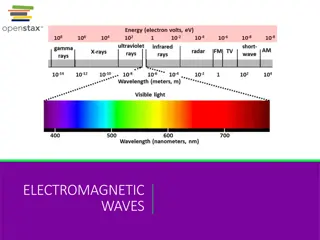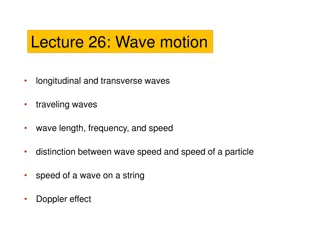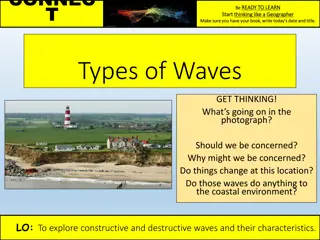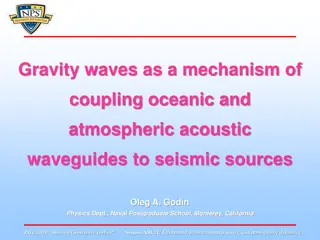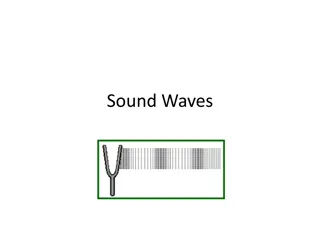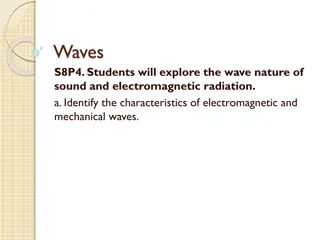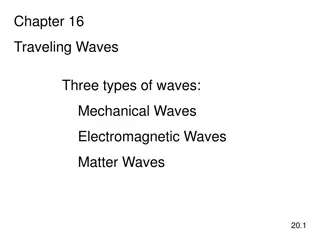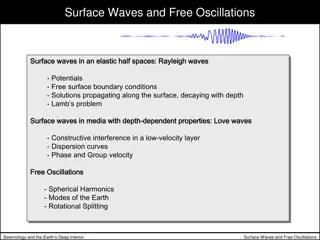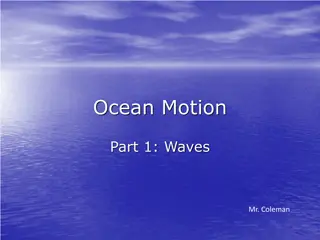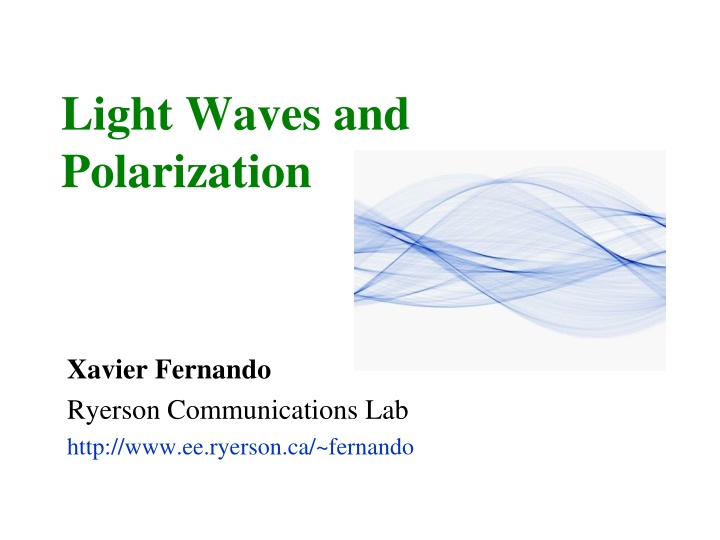
Light Waves, Polarization, and Quantum Theory
Explore the fascinating world of light waves including quantum theory, polarization, and wave theory. Learn about the nature of light, wavelength ranges, plane waves, field distributions, and basics of plane wave propagation. Delve into concepts like phase velocity, apparent and true depth, and more in this informative content.
Download Presentation

Please find below an Image/Link to download the presentation.
The content on the website is provided AS IS for your information and personal use only. It may not be sold, licensed, or shared on other websites without obtaining consent from the author. If you encounter any issues during the download, it is possible that the publisher has removed the file from their server.
You are allowed to download the files provided on this website for personal or commercial use, subject to the condition that they are used lawfully. All files are the property of their respective owners.
The content on the website is provided AS IS for your information and personal use only. It may not be sold, licensed, or shared on other websites without obtaining consent from the author.
E N D
Presentation Transcript
Light Waves and Polarization Xavier Fernando Ryerson Communications Lab http://www.ee.ryerson.ca/~fernando
The Nature of Light Quantum Theory Light consists of small particles (photons). This theory better explains light detection and generation processes. Wave Theory Light travels as a transverse electromagnetic wave. This theory better explains light propagation. Ray Theory Light travels along a straight line and obeys laws of geometrical optics This theory is useful when the objects are much larger than the wavelength of light (Multi Mode Fiber)
Quantum Theory of Light Light consists of discrete units called photons. The energy in a photon Eg= h h= 6.6256 X10(-34)J.s is the Planck s constant and is the frequency. Ex1: Find the energy of a photon travelling with 200 THz frequency Ex2: Show . 1 24 m = eV Eg ( )
Wave Theory of Light Electromagnetic light signal has electric and magnetic fields orthogonal to each other. The frequency of this EM wave is in the order of THz. Therefore, it is convenient to measure it in terms of wavelength. c = where, c - speed of light 3 X 108m/s in air, - frequency and - wavelength Ex: Find the when = 1550 nm. Answer: 193.5 THz
Plane Waves Most Light waves are plane waves A plane wave is a constant-frequency wave whose wave fronts (surfaces of constant phase) are infinite parallel planes. The electric field vector of a plane wave may be arbitrarily divided into two perpendicular components labeled x and y (with z indicating the direction of travel).
Field distributions in plane E&M waves Electric and magnetic fields are orthogonal to each other and to the direction of propagation Z
Basics about Plane Waves / propagation constant The combined wave E E o = cos( ) t kz s
Phase Velocity vp = c = co: Speed of light in air n: Refractive index vp Phase velocity: k n
Phase Velocity apparent and true depth Medium Ref. Index (n) 1 4/3 =1.33 3/2 = 1.5 Phase Velocity of Light 3x108 m/s 2.25x108 m/s 2x108 m/s Air Water Glass Light in fiber core travels slower waveguide dispersion
Changing Refractive Index The refractive index n is not constant It is a function of the wavelength of light, n = n( ). Therefore, different wavelengths will travel at different velocity in glass fiber The wavelength dependency of n is given by an empirical formula, the Cauchy or Sellmeier equations yellow red blue
Group of Waves Most practical light sources emit group of waves, not just one 2
Carrier and Envelope vp vg
Group Velocity c = n = = + v ( ) ng n m/s g k n g Group of waves travel at group velocity, slightly different from phase velocity The group refractive index ng is a function of n, anddn/d If proportional to k, then the ng = n and vg = vp. Usually it is not the case; This results in Group Velocity Dispersion . The GVD is important single mode optical fibers.
Sellmeier Equation Image:Sellmeier-equation.svg Refractive Index n is a nonlinear function of wavelength The slope of this graph is related to ng
Polarization Polarization of a plane wave is the orientation of the oscillations of the E field; perpendicular to the direction of propagation For a simple harmonic wave, the electric vector in orthogonal directions may have: Different amplitude Different phase The resulting wave is Linearly, elliptically or circularly polarized
When the orthogonal components have different phase and amplitude, resulting wave is Elliptically Polarized (General Case)
When the orthogonal components have 90o phase shift and equal amplitude, the resulting wave is Circularly Polarized (Special Case)
When the orthogonal components have zero phase shift, resulting wave is Linearly Polarized More useful Emitted by lasers Polarization control is possible Horizontal and vertical polarizations
Faraday Effect When a magnetic field is applied to linearly polarized light, the plane of polarization rotates. The rotation is proportional to the intensity of the applied magnetic field in the direction of the beam of light This effect is used in Optical Isolators
Optical Isolator Vertically polarized light enters the isolator. The Faraday rotator rotates it by 45o. Output polarizer passes the light. Backward traveling (reflected) light starts with 45o tilt. It gets horizontal polarization at the rotator and will be extinguished. output polarizer (allows light at 45o) File:Faraday-effect.svg Faraday rotator Input Polarizer (allows only vertically polarized light) Polarization Controller (creates vertical polarization)
Polarization Mode Dispersion (PMD) Each polarization state has a different velocity PMD


